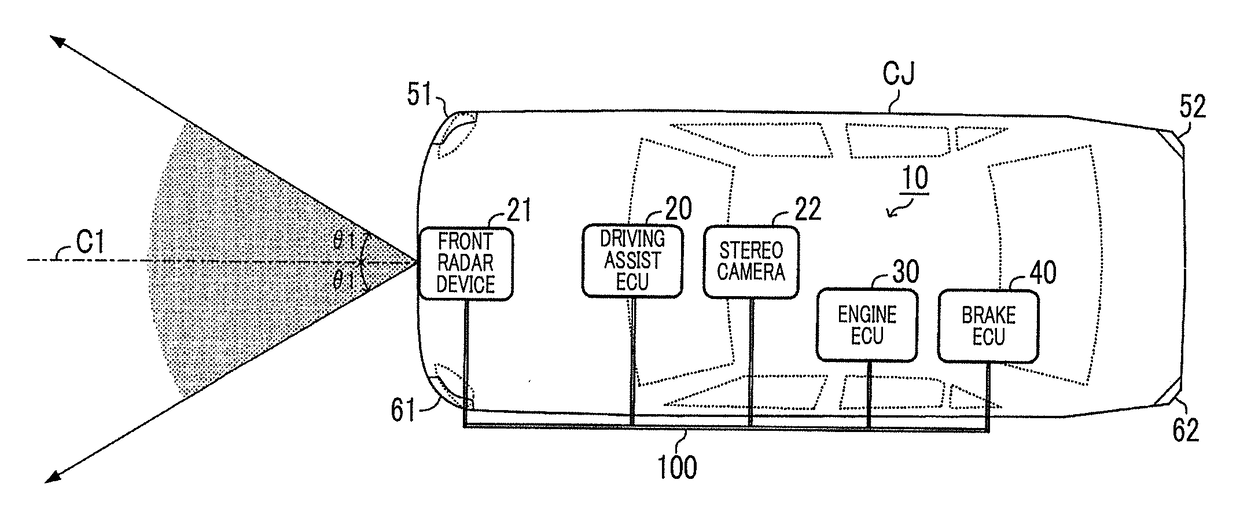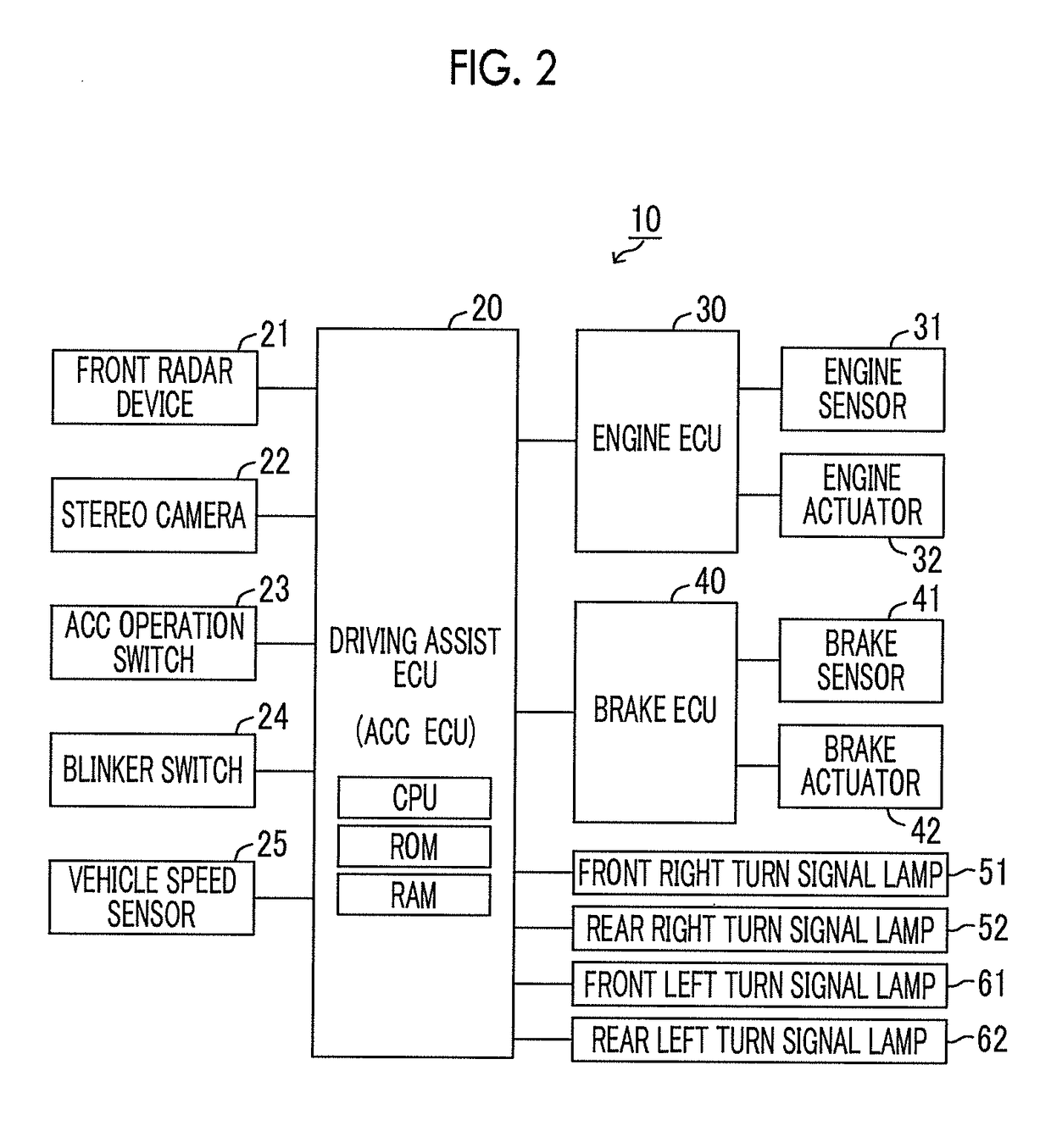Vehicle traveling control device
a control device and vehicle technology, applied in control devices, external condition input parameters, driver input parameters, etc., can solve the problems of excessive shortened inter-vehicle distance between the host vehicle and the passing lane preceding the host vehicle, excessive shortened inter-vehicle distance, etc., to achieve smooth acceleration of the host vehicl
- Summary
- Abstract
- Description
- Claims
- Application Information
AI Technical Summary
Benefits of technology
Problems solved by technology
Method used
Image
Examples
case 1
[0053](1) Case 1
[0054]In this case, the control device executes the following control according to whether or not the host vehicle CJ is accelerating.
[0055](1-A) In a case where the host vehicle CJ is not accelerating at the blinker operation time (that is, in a case where the actual acceleration of the host vehicle CJ at the blinker operation time is equal to or less than “0” and the host vehicle CJ is traveling at a constant speed or decelerating): The control device computes (calculates) the target acceleration required for maintaining “a second target inter-vehicle distance less than the first target inter-vehicle distance” with respect to the tracked preceding vehicle CT. The target acceleration is referred to as a “blinker interlocking target acceleration” for convenience. The control device selects the blinker interlocking target acceleration as the final target acceleration Gtgt. As a result, the host vehicle is accelerated at an acceleration (for convenience, referred to a...
case 2
[0057](2) Case 2
[0058]In this case, as described below, the control device controls the host vehicle CJ in the same manner as in Case 1 described above. The control device estimates the vehicle speed Vo of the passing lane preceding vehicle by adding the vehicle speed Vj of the host vehicle to a relative speed Vfx of the passing lane preceding vehicle and the host vehicle.
[0059](2-A) In a case where the host vehicle CJ is not accelerating at the blinker operation time, the control device selects the blinker interlocking target acceleration as the final target acceleration Gtgt.
[0060](2-B) In a case where the host vehicle CJ is accelerating at the blinker operation time, the control device selects the tracking target acceleration Gtgta as the final target acceleration Gtgt.
case 3
[0061](3) Case 3
[0062]In this case, the control device executes the following control according to whether or not the host vehicle CJ is accelerating.
[0063](3-A) Case where the host vehicle CJ is not accelerating at the blinker operation time: The control device selects, as the final target acceleration Gtgt, the target acceleration (that is, the tracking target acceleration Gtgta) required for maintaining the first target inter-vehicle distance with respect to the tracked preceding vehicle CT. That is, the control device does not perform special acceleration control due to the blinker operation. The final target acceleration Gtgt in this case is referred to as a “second acceleration” for convenience.
[0064]As will be understood from comparison with Case (1-A), in a case where the host vehicle CJ is not accelerating at the blinker operation time, the second acceleration (=the tracking target acceleration for maintaining the first target inter-vehicle distance) is lower than the firs...
PUM
 Login to View More
Login to View More Abstract
Description
Claims
Application Information
 Login to View More
Login to View More - R&D
- Intellectual Property
- Life Sciences
- Materials
- Tech Scout
- Unparalleled Data Quality
- Higher Quality Content
- 60% Fewer Hallucinations
Browse by: Latest US Patents, China's latest patents, Technical Efficacy Thesaurus, Application Domain, Technology Topic, Popular Technical Reports.
© 2025 PatSnap. All rights reserved.Legal|Privacy policy|Modern Slavery Act Transparency Statement|Sitemap|About US| Contact US: help@patsnap.com



